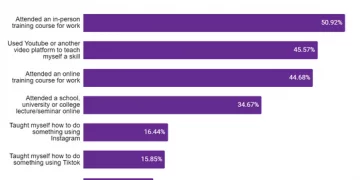
Getting To Win Win Outcomes In Difficult Situations
“Peace is not the absence of conflict, but the ability to cope with it.” Mahatma Gandhi
Conflict is an unavoidable part of life. Whenever there are groups of people, there are conflicts.
Learning to deal effectively with conflict is a vital part of developing your influencing skills.
For many people, the word “negotiation” has negative connotations, as they find it uncomfortable.
Negotiation does not have to be a negative experience.
This article will show you what a win-win outcome is and how to look for one in any situation.
You can also attend one of our Line Manager Training Courses here.
Win-Win Outcome versus Win-Lose Outcome
“Win-win is a belief in the Third Alternative. It’s not your way or my way; it’s a better way, a higher way.” Stephen Covey
Win-win is to find a mutually acceptable outcome for you and whoever you are trying to reach an agreement with.
Neither side gets everything that it wants, but both sides gain more than they lose.
It is a way of handling an issue that should allow everyone to move forward happy that they’ve been considered and leads to net positive outcomes.
Seeking win-win outcomes:
- build positive relationships
- increase trust
- build respect
- are a great long term strategy
Win-lose, on the other hand, is not the optimal solution to conflicts.
Imposing your will on the other party may be possible in some circumstances, but it is not advisable even then.
A win-lose attitude means that you seek to win regardless of the loss to your colleague. It is a competitive, zero-sum approach that often leads to manipulative behaviour.
Seeking win-lose outcomes leads to:
- Short-termism
- Hostility and increasing conflict over time
- Inflexibility
Examples of Win-Win and Win-Lose Outcomes
Let’s have a look at a couple of examples of win-win and win-lose in action.
Example 1:
Your boss asks you to stay late to finish an urgent task when you plan to meet friends. Your boss knows about your plans.
A win-win approach
Your boss says, “I know you have plans for today, and I’m really sorry to ask you to stay late to finish this project. If you agree to stay, I’ll make sure that you leave early next week to make up for it, and perhaps you could meet your friends then.”
This is a difficult situation where someone is going to be unhappy. However, the way your boss has approached it, he has also given you something and is trying to help you organise a fun night out with your friends.
This way, your boss gets the project done one time, and you get your night out with friends, even if it isn’t on the night you had hoped for.
In taking you into account and giving something, he is creating a positive work environment and trust.
A win-lose approach
Your boss says that if you don’t say late, there will be consequences for your career. He just imposes his will on you.
He does not consider your situation. Although you will probably comply, it’s unlikely that you will trust him or be particularly positive about your job in future.
Example 2:
You ask your boss for a salary increase, but you don’t know that company resources are limited, so a salary increase won’t be possible.
A win-win approach
Your boss explains that company resources are stretched, so a raise will not be possible in the short term.
However, they say that they will make sure that you are given more responsibilities and authority to put you in the best position for when an increase might be possible.
While you don’t get the raise you are looking for, your boss is showing empathy for your situation and helping you to be best prepared for the future when a raise might be possible.
While you may feel frustrated that you don’t have the raise that you wanted, you will leave the interaction feeling positive about your boss. He has shown empathy for your situation and is helping you achieve what you want.
A win-lose approach
Your boss flatly refuses the salary increase, saying that it’s not possible.
This will leave you far more frustrated than the example above. While you’ll still be in the same situation (on your original salary), you’ll now be less positive about your boss.

6 Ways To A Win-Win Outcome
Seeking a win-win outcome requires you to consider the needs, aims, and interests of the other side.
This approach turns a negotiation into a way to build and reinforce relationships.
There are five different ways we can use to reach a win-win outcome.
1. Focus on the problem, not the person:
Focus on solving the problem, avoid blaming the other person.
Remember that your disagreement is with the other person’s opinion on this one item, not with the person.
Getting a win-win solution requires you to express your point of view clearly so that they can understand how you see the problem.
However, if you focus on how you see the problem, they will not take the point personally, which keeps the conversation open and productive.
Equally, when they explain their position, be sure to use active listening techniques to understand how they see the problem.
2. Focus on interests, not positions
“What’s in it for me (WIIFM)?” This question ultimately drives all our decisions and arguments. Our interests are what triggers our actions.
When negotiating, if you focus on the other side’s interests rather than their position, you’ll have a far more constructive discussion.
3. A position is simply a suggested solution
The negotiation is there to find the optimal solution for everyone, so don’t get hung up on positions. Focus on interests and getting to the best solution for everyone.
4. Do your research
It is helpful to explain why you think what you think to the other side.
To help them understand your viewpoint, it is beneficial to give them as much information to support your perspective.
5. Generate many different options
A successful way of resolving differences is to generate and discuss a variety of potential options. To create and sort options:
-
-
- Use brainstorming techniques such as open-ended questions (covered in our communication guide here!)
- Evaluate the results
- Order these solutions based on their relevance and applicability
- Focus on the options that are most mutually advantageous
-
6. Use objective criteria
Very occasionally, it won’t be easy to find common ground.
If the outcome is genuinely (this is very rare!) binary, there may not be shared interests.
When this happens, it is helpful to use objective criteria to reach a conclusion.
If both sides can agree to the criteria, they can ensure that their interests are considered.
To ensure that this works well, the criteria should be:
-
-
- Agreed by both sides
- Independent of both sides
- Fair
-
If an objective outcome isn’t possible, you might want to think about deferring the decision to an independent but mutually acceptable third party.

When A Win-Win Solution Isn’t Appropriate
A win-win solution is not always appropriate.
There are times when it is impossible to get to a solution that satisfies all parties, or it just isn’t an appropriate time to be negotiating at all.
For example, once a decision has been made, the entire focus of a team should be on executing that decision as quickly and effectively as possible.
During a decision-making process, thoughts and ideas from the entire team should be actively canvassed. This is the time for team members to provide their input.
Once a decision has been made, it is unhelpful for team members to be questioning the decision. Discussions at this point should not be encouraged.
Similarly, occasionally you meet someone who has a diametrically opposed view to you on an issue. You should engage with them and look for a win-win solution, but sometimes it just isn’t possible.
In this case, it is often better to ‘agree to disagree’ ultimately. You can’t spend your whole life negotiating and discussing.
If the discussions have been thoughtful, you may walk away with more respect for the other person, even though you didn’t reach an agreement.
Conclusion
Finding a win-win outcome is an essential career skill.
As you rise through an organisation, you will face more and more ambiguous and multi-faceted decisions, and so this becomes an increasingly valuable skill.
Before your next discussion with someone you disagree with, take 5 minutes to think through ways you could facilitate a win-win.
Whatever the outcome, we’re willing to bet it will be a lot more productive conversation.


